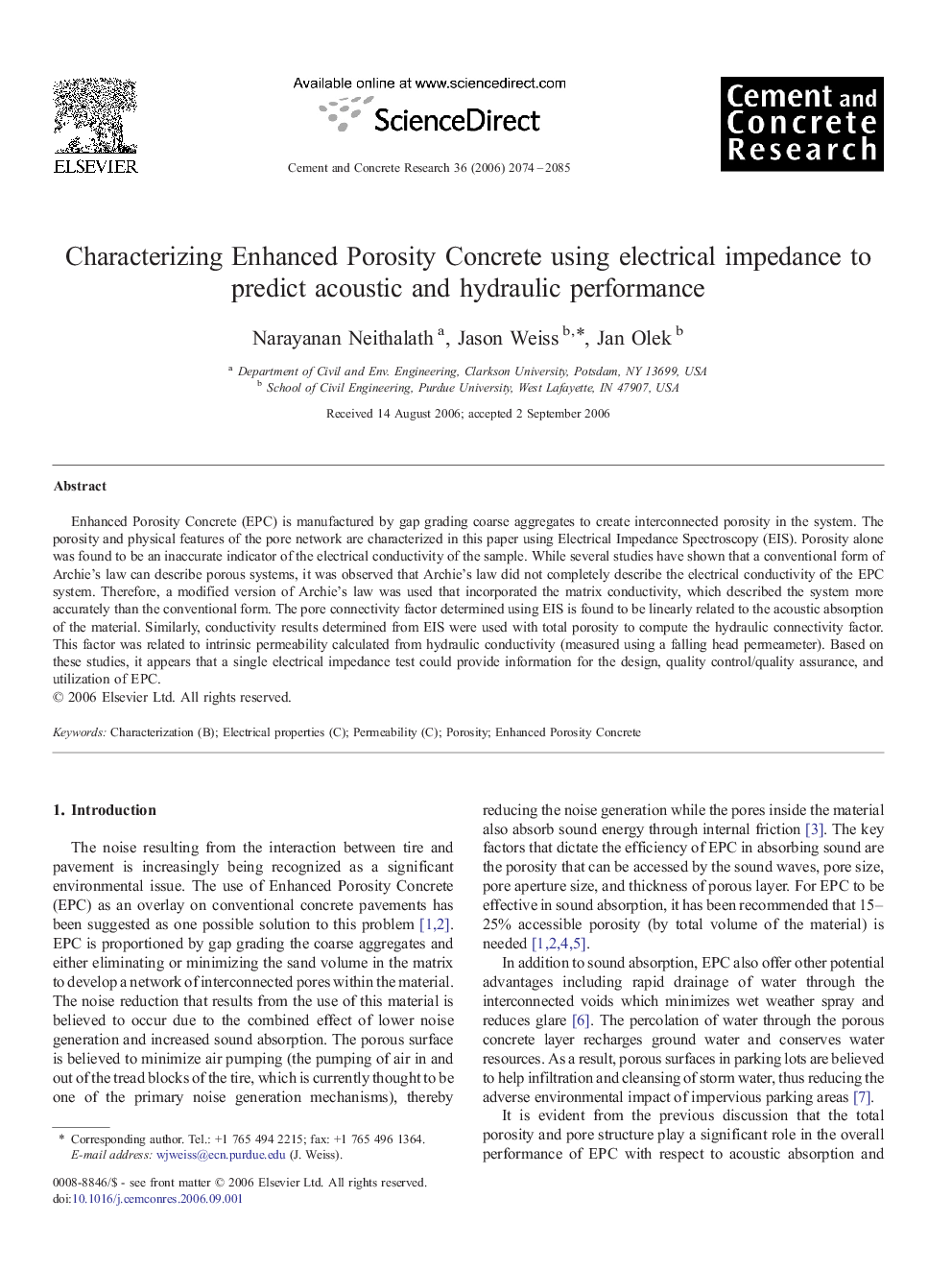| Article ID | Journal | Published Year | Pages | File Type |
|---|---|---|---|---|
| 1457836 | Cement and Concrete Research | 2006 | 12 Pages |
Enhanced Porosity Concrete (EPC) is manufactured by gap grading coarse aggregates to create interconnected porosity in the system. The porosity and physical features of the pore network are characterized in this paper using Electrical Impedance Spectroscopy (EIS). Porosity alone was found to be an inaccurate indicator of the electrical conductivity of the sample. While several studies have shown that a conventional form of Archie's law can describe porous systems, it was observed that Archie's law did not completely describe the electrical conductivity of the EPC system. Therefore, a modified version of Archie's law was used that incorporated the matrix conductivity, which described the system more accurately than the conventional form. The pore connectivity factor determined using EIS is found to be linearly related to the acoustic absorption of the material. Similarly, conductivity results determined from EIS were used with total porosity to compute the hydraulic connectivity factor. This factor was related to intrinsic permeability calculated from hydraulic conductivity (measured using a falling head permeameter). Based on these studies, it appears that a single electrical impedance test could provide information for the design, quality control/quality assurance, and utilization of EPC.
